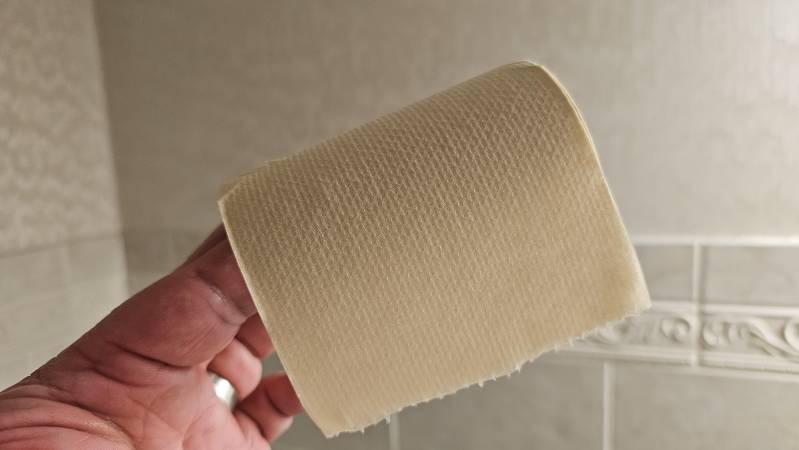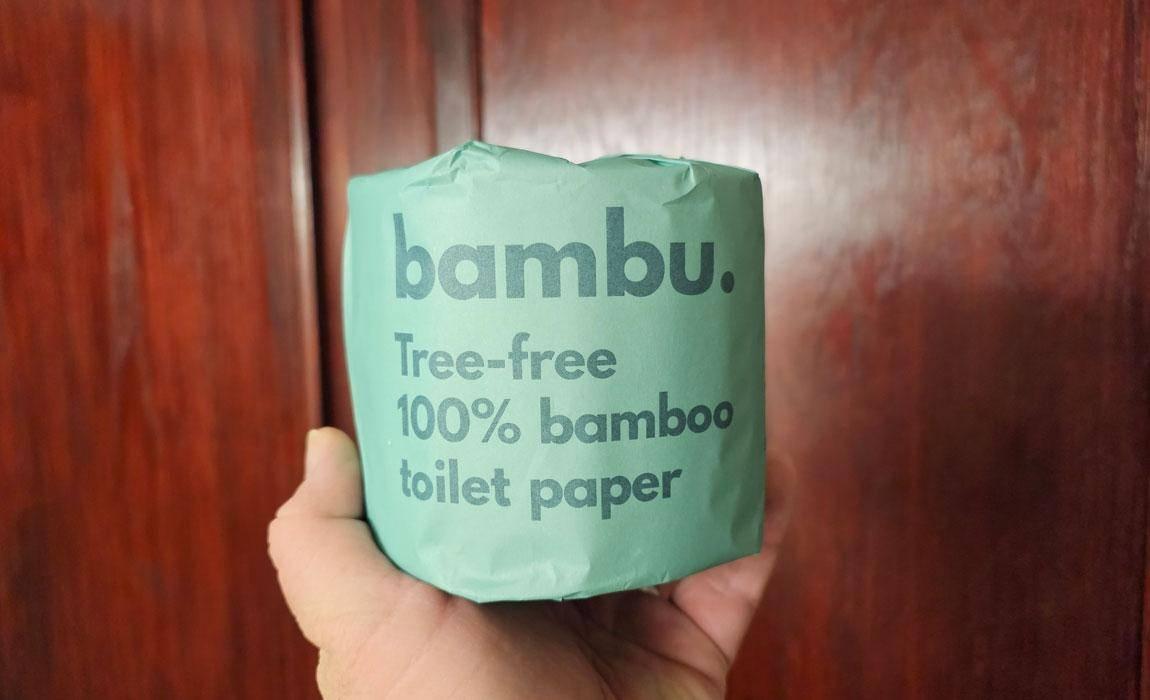When we look at the topic of conservation and preserving the clean air and water that we enjoy for our recreational activities, the conversation normally turns to lightbulbs and EV cars. However, like so much else in live, there are so many other big as well as small ways to make an impact. In fact, this topic was proposed to me by a PR person after joking around about a product that she was repping but it makes sense ... we generate a lot of waste every time we use the toilet and let's face it, we all poop.
So, let's turn your throne room into a green zone. Together, we'll explore how you can make a difference, one flush at a time.
Ready to join the eco-movement? Let's get started.
Key Takeaways
- Traditional toilet paper production contributes to deforestation and greenhouse gas emissions, while bamboo toilet paper offers a more sustainable alternative.
- Bamboo toilet paper is more durable, hypoallergenic, and anti-bacterial, providing a softer and more comfortable experience while reducing the risk of irritation and infections.
- Bidets use minimal water, help cut down paper waste, conserve water resources, and offer efficient cleaning compared to toilet paper.
- Other eco-friendly alternatives for men's bathroom habits include waterless urinals, compostable wipes, low-flow faucets, eco-friendly cleaning products, and compost bins for waste reduction and recycling.

Honestly, I never thought I'd be writing about toilet paper on here but this subject is actually pretty fascinating and I appreciate that the folks at HeyBambu sent me a case of their bamboo toilet paper so I could give it a try. I wasn't sure what to expect since what TP you use is almost as personal as what brand of boxers you prefer.
I was expecting it to be rough or at least flimsy and have my fingers break through while wiping but it was both surprisingly strong and comfortable. It also frankly looks good too. While traditional toilet paper is bleached white, this has a nice "natural" looking beige.
You can buy a box of 24 rolls for $42 or 48 for $65 on their website. While this is well more than double what I normally pay for Charmin, the reality is that now that I have my new bidet installed ... I use toilet paper far less often. In that context, HeyBambu is absolutely a luxury product but one that I think is important to consider if you truly want to make your bathroom habits more eco friendly.
The Environmental Impact of Traditional Toilet Paper
You're probably not aware of your toilet paper's significant impact on the environment. The average American will go through as much as 57 pounds of toilet paper each year - that's 19 BILLION pounds of waste paper being flushed every year in the United States.
Traditional toilet paper production has a major deforestation impact, with millions of trees being cut down annually. This isn't just about losing trees. It's also about the loss of biodiversity and the increase in greenhouse gases.
But the harm doesn't stop there. The chemical processes involved in converting wood into soft, white rolls are also problematic. Chlorine-based bleaches, for instance, produce dioxins, a group of toxic chemicals that can cause health problems and harm aquatic ecosystems.
On top of that, millions of gallons of water are required to produce that paper too!
It's clear that your bathroom routine isn't as green as you might think. By understanding the environmental repercussions, we can start making more eco-conscious choices.
The Benefits of Bamboo Toilet Paper for Men
In your journey towards sustainable living, it's crucial to understand the benefits of bamboo toilet paper, particularly for men. Recognized for its bamboo durability, this eco-friendly option surpasses regular paper in strength and longevity. It's less likely to tear, ensuring a more effective clean.
Bamboo toilet paper is celebrated for its ecological benefits, primarily due to the sustainable nature of its main ingredient. Bamboo is an incredibly fast-growing plant, with some species able to grow up to three feet in a single day. This rapid growth rate significantly reduces the time it takes for bamboo to mature and be ready for harvesting, which is approximately five years. In contrast, hardwood and softwood trees, commonly used in traditional toilet paper production, can take up to 50 years to be ready for harvesting. This makes bamboo a highly renewable and sustainable resource, contributing to the conservation of forests and biodiversity.
Another noteworthy ecological benefit of bamboo toilet paper is its production process, which is typically free of harmful chemicals, bleaches, and fragrances. This approach not only minimizes the exposure of users to potentially harmful substances but also reduces the amount of these chemicals being introduced into water systems during the production process and after use. The absence of these chemicals makes bamboo toilet paper a safer option for the environment, as it mitigates water pollution and the associated impacts on aquatic life and ecosystems.
Furthermore, bamboo toilet paper is completely biodegradable, meaning it breaks down easily in water, whether in sewage systems or septic tanks. This characteristic is crucial for reducing environmental impact, as it prevents the accumulation of waste and facilitates the treatment of wastewater. Additionally, the type of bamboo used for making toilet paper is not a food source for wildlife, including pandas, ensuring that their habitats and food supplies are not adversely affected. The dense growth pattern of bamboo also means that more material can be produced in a smaller area, promoting efficient land use and further underscoring the ecological advantages of bamboo toilet paper.
Beyond durability, the health benefits are notable. Bamboo is naturally hypoallergenic and anti-bacterial, reducing risks of irritation and infections. Plus, it's softer, providing a comfortable experience.
Understanding the Function and Advantage of Bidets
So, you've considered bamboo toilet paper, but what about a bidet, an increasingly popular and eco-friendly bathroom fixture?
Bidet installation might seem daunting, but it's a simple process that can significantly reduce your carbon footprint. Here's why: bidets use minimal water compared to traditional toilets, cutting down on paper waste and conserving our planet's resources.
Plus, they offer considerable health benefits. A quick spray can clean more efficiently than toilet paper, reducing the risk of irritation and infections.
By adopting this practice, you're joining a global community of conscious consumers. We're all in this together, striving for a more sustainable world.
Other Eco-Friendly Alternatives for Men's Bathroom Habits
Beyond bamboo toilet paper and bidets, there's a variety of other eco-friendly habits you can adopt to make your bathroom routine even greener.
Eco-Friendly Toilet Paper Alternatives:
As we discussed above, bamboo toilet paper is becoming one of the most popular eco-friendly toilet paper alternatives. Made from rapidly renewable bamboo, this option is biodegradable and often free of bleach and other harsh chemicals.
- Recycled Toilet Paper: Produced from recycled paper products, it reduces the demand for virgin pulp.
- Reusable Cloth Wipes: Washable and reusable, cloth wipes can be a sustainable choice for those willing to do the extra laundry. The true environmental impact here is debatable since you need to use significant amounts of water and detergent to keep these cloth wipes clean.
- Bidets: A bidet can significantly reduce or even eliminate the need for toilet paper. A true bidet is typically a stand-alone unit that sits next to the toilet though this is now seen as redundant because integrated bidet toilets and washlet technology has progressed to a level where that format is infinitely more practical and comfortable.
- Washlets: Similar to bidets (and indeed referred to as bidets), washlets are toilet seats with integrated water sprays for cleaning.
- Toilet Paper Alternatives: Products like family cloths, which are washable and reusable, can also be considered.
Eco-Friendly Toilet Alternatives:
- Composting Toilets: These toilets convert human waste into compost through a biological process. They are waterless or use minimal water, making them ideal for water conservation. Additionally there are dry toilets that use ash, sawdust or sand that can collect waste before being disposed of and similarly urinal diverters can be used to separate urine from waste water with the water being collected for use as grey water and the urine being collected to be processed separately. Ultimately both of those solutions typically end up with your waste being collected for composting.
- Low-Flow Toilets: Designed to use significantly less water per flush compared to traditional toilets, low-flow toilets are an excellent choice for water conservation.
- Dual-Flush Toilets: These toilets have two flush options (one for liquid waste and one for solid waste) to minimize water usage.
Additional Tips:
- Use Greywater Systems: Implementing a greywater system allows you to reuse water from sinks and showers for flushing toilets.
- Install Faucet Aerators: These devices reduce water flow from faucets, conserving water when washing hands or cleaning.
- Practice Water Conservation: Being mindful of water usage and avoiding unnecessary flushing or running water can have a significant impact over time.
- Use Organic Cleaners: Washing harsh deadly chemicals down the drain causes harm to water supplies downstream even if water treatment plants can filter it out of the waste water. These chemicals can also cause harmful chemicals to pollute the air and reduce indoor air quality in your home, leading to breathing problems over time.
Adopting these eco-friendly alternatives and practices can contribute to sustainable living and environmental conservation, aligning with the global efforts to combat climate change and preserve natural resources.
